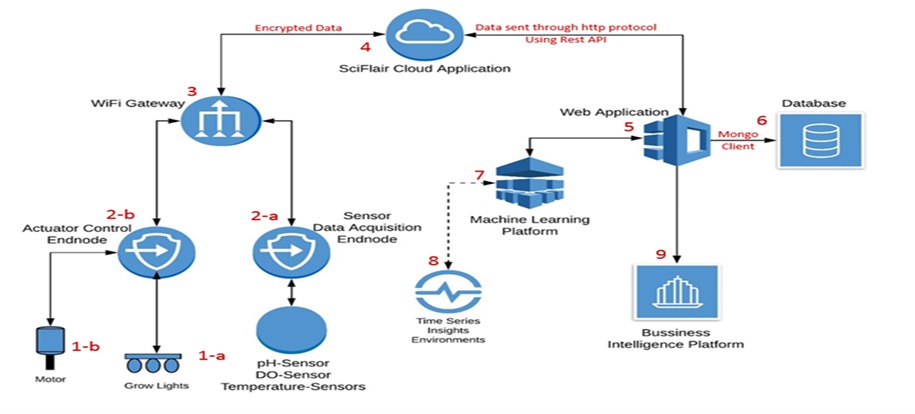ISLAMABAD: The aquaponics management system is a key technology developed and demonstrated by Pakistani scientists for farmers to manage their farms.
Farmers can also apply the system to existing fish and hydroponic farms for organic fish, vegetable, and fruit production.
Dr Nosherwan Shoaib, Associate Professor at the School of Electrical Engineering and Computer Science (SEECS), National University of Sciences and Technology (NUST), said while talking to WealthPK that an aquaponics system combines aquaculture (fish farming) with hydroponics (growing plants in water).
An aquaponics management system, a web-based platform, has been developed to assist farmers in creating, analysing, monitoring, and controlling their aquaponic farms. A sensor-based dashboard displays real-time data about the harvest date and growth progress of plants and fish on an electronic progress chart.
Dr Nosherwan said the prototype of an aquaponics management system has been developed in the lab.
“Our team tested this system to grow tomatoes and bell peppers with fish at 120 sq ft and 400 sq ft outdoor aquaponics farms. This system has also been successfully deployed at other outdoor farms to grow leafy vegetables and fruits along with fish production, including cherry tomatoes, bell peppers, strawberries and lettuce,” he said.
“We estimated the system’s feasibility from a model farm perspective. A break-even analysis has been carried out while considering the farm size of 10,000 sq ft to produce fish, bell peppers, strawberries, coriander, and lettuce. As a result of the analysis, it is concluded that farmers can achieve the system’s break even within two years with an initial investment of Rs6 million and reap a profit of Rs10 million over five years due to increase in production,” he said. Furthermore, he said, the profit margin is expected to increase for large farms.
Dr Nosherwan mentioned that Pakistan faces dire problems, such as a rapid population increase of 2% per year, which is estimated to reach 340 million by 2050, food insecurity of 58%, the highest water shortage index among lower-middle-income countries, drought in rain-fed areas, and a decline in agricultural land use.
He said the aquaponic management system can enhance Pakistan’s economy by introducing new techniques and connecting agriculture with technology. He said its primary objective is to provide an alternative to traditional food production in the industrial and private sectors. He said this system is particularly useful for urban areas with low land and overpopulation. The system requires minimal human interference during the cultivation process, which increases food production compared to traditional farming techniques.
The final product of such a method is purely organic (i.e., free from contaminants such as pesticides) and cheaper than traditionally grown crops. It uses 90% less water, grows six times more, has twice as fast yield, and has all-year-round organic production. The commonly used fish are tilapia, rohu and carp. At the same time, the outcome includes leafy vegetables and fruits such as cherry tomatoes, bell peppers, strawberries, lettuce and cabbage.





